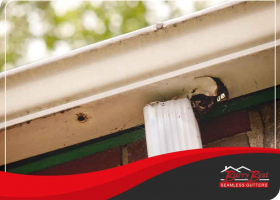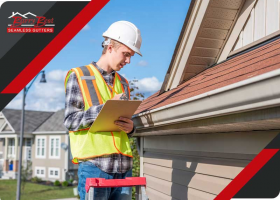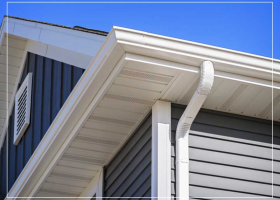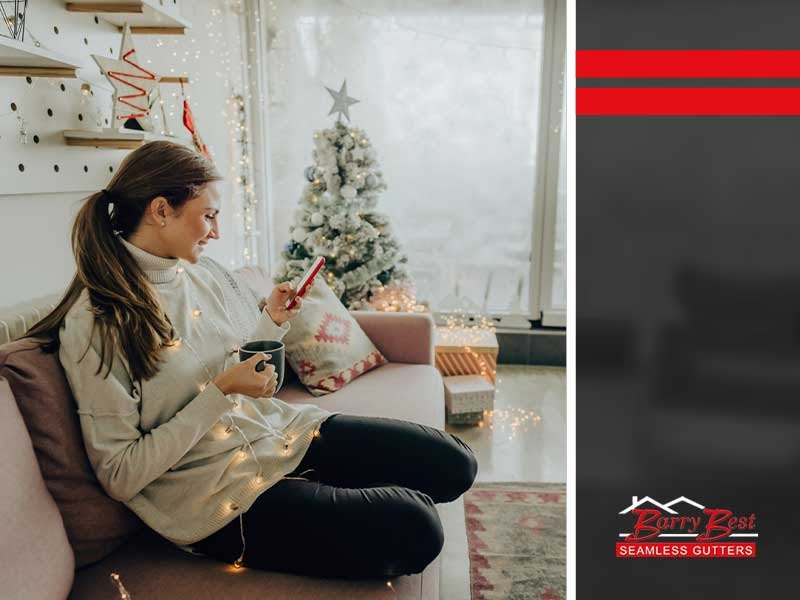
How to Inspect Your Gutters Like a Pro

Gutters play an important role in keeping your home safe from water damage, but they don’t actually stand out much. In fact, they’ll mostly stay under your radar – that is, until something goes seriously wrong with them. Have you checked your gutters lately? You might want to do so now. The task is notably easier compared to visual roof inspections because the telltale signs of gutter damage are usually more obvious. Still, it pays to know exactly what you should be watching out for.
Here’s how you can inspect your gutters the way professionals do.
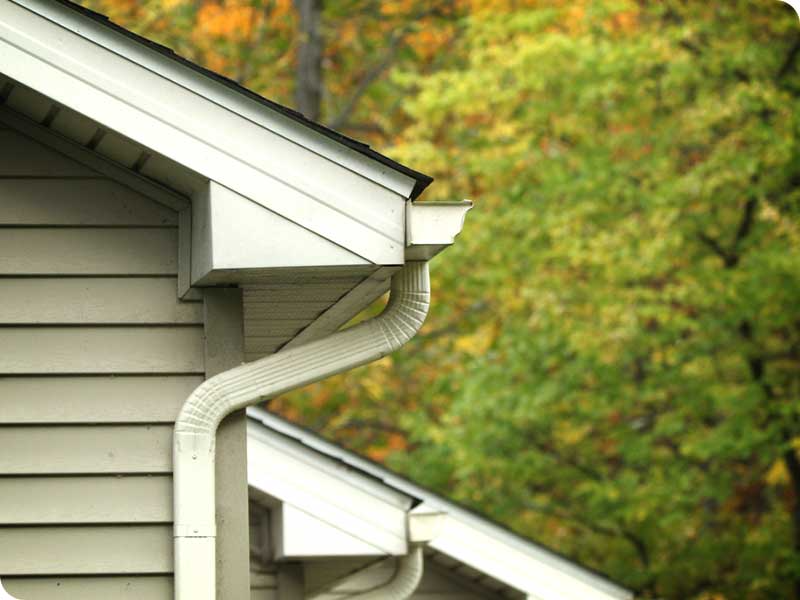
Start From the Ground
Before climbing any ladders, it’s a good idea to examine your gutters’ condition from the ground. The angle allows you to check their slope and consistency. As you probably already know, gutters don’t run a straight line along your roof. They’re actually pitched slightly so they can catch the rainwater coming down the roof more effectively. From your position on the ground, examine the gutters for sections that appear lower or higher than the rest. Do some parts look out of place? Are the sections beginning to pull away from the roofline? Checking whether this is the case is the first step to getting the necessary solution.
Remove Leaves and Debris Inside Your Gutters
Leaves, pine needles and other loose debris can end up inside your gutters, creating blockages that hinder their ability to drain runoff properly. If you want to take a closer look at the system, you’ll need to have these blockages cleared away first. You can either clean the gutters yourself or hire an expert for the task. To reduce stress and ensure your personal safety, we recommend doing the latter.

Check the Gutters for Holes, Cracks and Standing Water
Once the gutters are cleared of leaves and debris, take the water hose out for a few experiments. Use it to run water along the highest points of the gutters. If there are any cracks and holes in the system, you’ll find out soon enough because water will be leaking out of these openings. This usually indicates failed seals in the gutter system. Any cracks and holes can be patched and repaired if they’re small enough. When that’s not the case – and the leaks are actually pretty serious – a new gutters might be the better option.
But what if there’s no water leaking out of your gutters? Unfortunately, that doesn’t mean everything’s good. Check the downspouts. If the water from the hose isn’t flowing out of them, it can only mean that water is building up somewhere in your gutters. Standing water can be a serious problem because it puts unnecessary strain on the gutters, causing them to sag or detach from the fascia board. When it rains, the accumulated water can also flow over the sides of the gutters, splashing against the side of your home and wreaking havoc on the ground below. But it doesn’t end there either. The longer standing water is overlooked, the higher the chances of leaks. The accumulated water can seep through the fascia board and find its way down the attic and into your home.

Look for Gaps in the Gutter Apron
In more serious cases, gutter damage is represented by a visible gap between the gutters and the building to which they’re attached. The two elements are connected by guards called gutter aprons. These are long pieces of metal installed under the roof’s first layer of shingles. Gutter aprons ensure that the rainwater flowing down the roof is fed directly into the gutters and won’t splash behind the system. When there’s a gap between the gutters and your home’s exterior wall, it can only mean the aprons have been compromised.
Inspect Your Gutter Protection System
If you have gutter protection installed over your system, don’t forget to check its condition as well. Gutter protection works by filtering out leaves and loose debris so they don’t end up clogging your gutters. It’s available in different types, ranging from mesh and brush to foam and perforated. If the gutter protection remains intact – no gaps, clogs or holes made by small animals – then the actual gutter system may still be in good shape.
What’s the Next Step?
Experts recommend a gutter inspection at least twice a year – one in early spring and another in fall. This allows you to spot any issues before they can worsen and cause further damage. But what exactly is next after a gutter inspection? It’s simple – you’ll have to call in a professional like Barry Best Seamless Gutters. While the signs of gutter damage are easy to spot, dealing with the actual problem is another story. This is especially true when the damage to your gutters is severe. The issue may require a seamless gutters installation – a solution that homeowners should never attempt to DIY.

Madison County homeowners know that when it comes to high-quality gutter services, Barry Best Seamless Gutters will definitely deliver. We are:
- Fully licensed, bonded and insured for your greater protection.
- Locally owned and operated so we know exactly your gutter needs and how to meet them.
- Experienced, serving communities in Canastota, NY, and beyond for nearly 30 years.
- Certified by trusted industry names, such as Gutter Helmet® and Sunesta®.
- Accredited by the Better Business Bureau® and maintains a prominent A+ rating with them, which is a testament of the quality of our workmanship.
- Committed to delivering complete client satisfaction through our high-quality products, exceptional workmanship, and customer-first service.
- Offering flexible financing options via GreenSky® so that cash wouldn’t get in the way of your seamless gutter and gutter protection installation.
Why Go Seamless?
Gutters are generally available in two types: sectional and seamless. Between the two options, you’ll find the latter several steps above the former. Picking seamless gutters means putting your trust on a system that can provide tougher and more effective draining performance. Seamless gutters are crafted to precise measurements using a single, continuous piece of metal. This allows them to fit perfectly along your roofline. And because seamless gutters use thick, contractor-grade material, they’re considerably stronger than sectional systems, allowing them to withstand the harshest elements more effectively.

There’s less chance of leaks and congestion when you choose seamless gutters. The few seams they do have are found only in corners, significantly reducing the potential for seal failure. Their sleek design also ensures that water drains properly into the system and is directed away from your home via the downspouts. In addition, seamless gutters can add a clean and finished look to your roofline. They can be customized with your choice of profile, color and material, allowing them to match perfectly with your home’s style, roof color and exterior palette.
To get the most out of your seamless gutters, consider having a quality gutter protection system installed. Barry Best Seamless Gutters is a certified installer of Gutter Helmet gutter protection. It features a patented nose-forward design that allows only rainwater into the gutter system. Everything else – leaves, pine needles and other loose debris – are shed to fall harmlessly to the ground. Thanks to Gutter Helmet gutter protection, the need for frequent gutter cleaning and maintenance is significantly reduced. And since this option is also available in a variety of classic finishes, it will fit in beautifully with the color of your seamless gutters.

What Makes Seamless Gutter Installation Worth the Investment?
Having a sturdy and long-lasting roof for your home isn’t enough – you’ll need a well-designed gutter system for it as well. The gutters act as the Robin to your roof’s Batman. By catching runoff and directing it to where it can’t do any harm, the gutters play support to your roof, helping it keep your home dry and damage-free. But have you taken the time to check their condition lately?

Better Ways to Spend Winter Than Worrying About Gutters
Home Maintenance Tasks to Accomplish Before Fall
Before you say goodbye to the hot summer days and embrace the cooler weather of fall, make sure your home is also ready for the change of seasons. This means doing a bunch of home maintenance tasks, which are not quite as exciting for many people. But as long as you start early and gradually, preparing your home could be less stressful and exhausting for you. Of course, don’t forget to get the help of contractors for bigger tasks so that you can lighten your load and ensure each job will be done properly.

In this post, gutter installation expert Barry Best Seamless Gutters lists some essential home maintenance tasks that you should get done before fall finally comes in full swing.

Landscaping
Continue tending to your yard or garden. Prune your landscaping to encourage plants, flowers and trees to grow healthier and thicker. Just make sure to prune properly to avoid disfiguring or harming your plants and trees.
For most plants, pruning can be done by removing up to one-third of the total stems after the first year of growth. Then, you can prune any older stems over the next two years to help the plant grow new and healthy stems.

For trees, some of the common areas that should be pruned include:
- damaged, diseased or dead limbs
- sagging limbs
- small branches growing from the base of the roots or trunk
- branches that interfere with each other
When done successfully, trimming your trees can help keep pests away and improve your home’s curb appeal. However, take note that tree pruning is best left to arborists or tree trimming professionals since the task requires climbing up a ladder and handling tools.
Lastly, make sure not to skip fertilizing your lawn. To ensure that your lawn will look great in the spring and summer, you should prep them for the fall and winter. Keep in mind that roots remain active when the grass isn’t growing. And by applying fertilizer now, you can prevent winter damage and encourage faster growth in the spring.
Plumbing
Make sure your plumbing connections are in good shape. Call your trusted plumber and have your plumbing system inspected, particularly your water and drain lines. Proper maintenance is the best way to prevent water damage and to prepare your plumbing system for the colder weather.
Drain Your Outdoor Faucets
Don’t forget to turn off all your outdoor faucets before winter. Furthermore, make sure all your garden hoses are drained and disconnected from outside spigots. Failure to do this could cause water to freeze and your pipes to potentially burst.
Check Your Washing Machine Connections
Check your washing machine connections too. Remember that your washer has hot and cold water lines running to it. If you have an older unit, look for black rubber hoses. But if you have a newer model, it’s likely using braided steel lines. Check these for any signs of water leakage, such as bulging hoses, pooling water or discoloration on the drywall.
Gutters
Inspect your gutters for damage. Look out for leaks, loose screws, uneven sections, and any signs of wear and tear. Make sure your gutters aren’t sagging or pulling away from your home. If any of these problems are present in your gutter system, call a gutter professional and have them assess the condition of your gutters. They could recommend fixing or replacing your gutters and downspouts. In case of gutter replacement, you might want to consider seamless gutters since these tend to be less susceptible to leaks than seamed gutters.

Clean Your Gutters
Your gutters drain a huge amount of rainwater from your roof every year. That’s why you should take time to check for dirt and debris buildup inside your gutters. Clean your gutter system regularly to avoid clogging. Otherwise, you might have to deal with a flooded interior or a damaged roof or exterior.
Install Gutter Guards
Consider adding gutter guards to keep leaves, debris and other small objects out of your gutter system. Don’t worry because these covers are designed to prevent debris from getting in your gutters while allowing water to enter and exit easily. By installing gutter guards, you can reduce the amount of debris that falls in your gutters and minimize or eliminate the risk of clogging.
HVAC
Autumn will surely bring cooler temperatures. And with winter, you can expect the weather to be colder. Make sure your interior will remain comfortable during these months by having your heating system tuned up and improving your ventilation. Clean vents and change filters to improve the efficiency of your HVAC system and ensure good indoor air quality.
Ventilation
Check your bathroom and range hood ventilation as well. Ensure your exhaust fans are working properly and they are able to effectively remove excess moisture and heat from your home. Inspect your vents — make sure they aren’t blocked with debris and the fans have no signs of wear. When it comes to your HVAC system, it’s best to hire an HVAC professional. Exhaust vents, for instance, can exit through your roofline or wall, so they might not be easy to find and clean.
HVAC Units
Clean your outdoor HVAC units and cover areas where leaves and other debris could possibly enter. When dirt gets inside your outdoor unit, this would likely affect its performance and efficiency.

And although your heating will take up much of the work during fall and winter, now is still a good time to do some air conditioner maintenance. Your air conditioner has run all summer long and condensed a good amount of moisture in the air. This moisture typically runs safely through the drain lines. But for various reasons, these could become clogged or damaged. Watch out for water pooling near your foundation or in your basement as this could mean a problem in your drain lines. To check if the water is moving through the drain line while the air conditioner is working, you should be able to see some moisture draining. There shouldn’t be a significant amount of water.
Windows
Check your windows for drafts and make sure your interior is not losing heat. Heat loss through windows accounts for 25-30% of heating energy use. To avoid this problem and to help keep your heating costs down, you can update your weatherstripping.
Exterior
Give your exterior some TLC. Look out for damage in your siding and make sure your roof is in tip-top shape. Pay attention to your driveway as well. If you notice any cracks, have them fixed right away. When water gets into these cracks, it will freeze and expand, making the cracks even bigger. Small cracks can become large cracks that could possibly cause the concrete to crumble over time.
Get a Free Quote Today!
Barry Best Seamless Gutters provides high-quality gutter systems, including heated gutter systems, for residential buildings and commercial facilities. We also offer a range of awnings and retractable screens to suit various applications. Our team is composed of fully trained and professional individuals who can guarantee top-notch workmanship and exceptional customer service. Call us at (315) 697-5000 or fill out our contact form to request a free estimate. We serve customers in Canastota and Syracuse, NY, as well as other surrounding areas.





